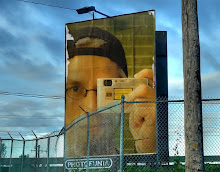Chinatown Bangkok - Yaowarat, the Chinese Legacy
By Eric Lim
Chinatown Bangkok was started when King Rama I decided in
1782 to establish the new capital Bangkok on the eastern bank
of the Chao Phraya River. The Chinese immigrants who were
originally settled in the area that is now the Grand Palace had
to move out to a strip of land a kilometre down the river.
Over the years the settlement grew. Today, Chinatown
Bangkok or Yaowarat covers a square bounded by Phadung
Krung Kasem Canal to the east, the Ong Ang Canal to the
west, Luang Road to the north and the Chao Phraya River to
the south, an area of about 2 sq km.
The casual visitor to Chinatown would probably only have the
time and energy to cover the main street Yaowarat Road
where most of the activities are concentrated. The other road
of interest is Rachawong Road which is off Yaowarat Road.
If you are coming to Chinatown by road the most convenient
way to start your tour of this Bangkok legacy is to take the
subway to the Hua Lam Phong station located on the eastern
bank of the Phadung Krung Kasem Canal. Nearby is the Hua
Lam Phong railway station from which trains travel to every
part of Thailand.
Across the road from the train station is Traimit Road where
the famous Wat Traimit
or Temple of the Golden Buddha stands. This wat houses a 3 m
high Buddha made of more than 5 tonnes of gold!
Within the same compound as Wat Traimit, is the Saphanthawong
Museum a community museum dedicated to the early
Chinese immigrants in Bangkok.
Outside the main entrance of Wat Traimit is a traffic island on
which stands a huge Chinese arched gate, the Odeon Gate,
built in 1999 to mark the 72nd birthday of King Bhumipol, the
present king. This gate marks the start of Yaowarat Road and
the walking tour of the rest of Chinatown.
Yaowarat Road, the main street in Chinatown Bangkok, was
built in the reign of King Rama V. The crowded street winds
through bustling heart of Chinatown like a mythical dragon
rearing its head at the Odeon Gate. Shop signs in both Thai
and Chinese give the visitor a clear indication that he's in
Chinatown.
The street is lined with ubiquitous goldsmith shops, sharks' fin
and birds nest restaurants, shops and vendors selling Chinese
herbal medicine, dried mushrooms, salted fish, roast duck,
Chinese calendars, almanacs and of course, lottery tickets. The
avid bargain hunter would have a ball a time browsing
through the shops and stalls.
Every year during the Chinese New Year, Yaowarat Road is
closed to traffic for street festivities, lion dances and food fairs.
A member of the royal family attends the occasion every year
much to the joy and pride of the Yaowarat community.
Most of the bigger hotels in Chinatown are located along
Yaowarat Road. The most prominent however is the Grand
China Princess at the Ratchawong junction, right in the heart
of Chinatown, overlooking the old city and the Chao Phraya.
About a kilometer down Yaowarat Road turn left into
Ratchawong Road another street full of vendors selling
everything from stickers, deep-fried snacks to roasted
chestnuts. Ratchawong Road has two significant landmarks in
Chinatown.
Fifty metres after turning into Rachawong Road you'll
encounter a tall Chinese arch to a narrow soi on the left.
During the Lunar New Year in 2004, this soi, Soi Phalittaphon,
was renamed Soi Sun Yat Sen,
after the father of the Chinese revolution who visited
Chinatown Bangkok in 1908, during his tour of South East
Asia to raise money from the overseas Chinese for the
revolution.
Walking through this narrow soi, the visitor would have to
cope with the crowds of shoppers and the frequent passage of
vehicles. The shops and stalls along this packed soi sell a wide
variety of goods and even Christmas trees.
Further along Rachawong Road is an even narrower soi to the
right. The soi is so congested that it's barely passable to human
traffic. Packed with stalls on either side, it would take a very
determined shopper to weave his way through.
It's difficult to imagine that this is the famous Soi Sampheng or Soi Wanit where the
original Chinese settlers first moved in and started Chinatown
in 1782.
At the end of Rachawong Road is the Rachawong Pier on the
Chao Phraya River. If you are coming by boat, this is the pier
to alight and start your of Chinatown in reverse. If you have
arrived by road, you may wish to leave by boat for a change.
A tour of Chinatown Bangkok provides a fascinating insight
into a very different way of life. The busy streets are a melting
pot of communities engaging in trade and commerce at every
level – a legacy of the early Chinese immigrants and their
enterprise.
Chinatown Bangkok is one of the old treasures in Tour Bangkok Legacies,
a historical travel site on renowned places preserved for
posterity, the momentous events surrounding these places and
the legendary figures who left these legacies in the landscape of
Bangkok. The author Eric Lim, a free-lance writer, lives in
Bangkok Thailand.
Article Source: http://EzineArticles.com/?expert=Eric_Lim
21 April 2009
Subscribe to:
Post Comments (Atom)
About.Bangkok Photo

About.Music I'm Listen

No Line on the Horizon / U2





No comments:
Post a Comment